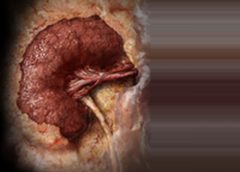Search Results for: Cal
California hospital’s patient safety protocols now require a wearable
Clinical Notes: Radiation & Lymphedema, Decline in Diabetic Foot Ulcers
Simple test may predict surgical wound healing complications
Clinical Notes: Wound Photography, Lymphedema, GI Complaints
Critical Wound-Healing Proteins Described
Clinical Notes: Aspirin, Skin Infections, NPWT surgical incisions
Aspirin inhibits wound healing
A study in the Journal of Experimental Medicine describes how aspirin inhibits wound healing and paves the way for the development of new drugs to promote healing.
The authors of “12-hydroxyheptadecatrienoic (12-HHT) acid promotes epidermal wound healing by accelerating keratinocyte migration via the BLT2 receptor” report that aspirin reduced 12-HHT production, which resulted in delayed wound closure in mice. However, a synthetic leukotriene B4 receptor 2 (BLT2) agonist increased the speed of wound closure in cultured cells and in diabetic mice. (more…)
Read MoreClinical Notes: Pressure Injury Prevention, Diabetes, LIV
Incidence density best measure of pressure-ulcer prevention program
According to the National Pressure Ulcer Advisory Panel (NPUAP), incidence density is the best quality measure of pressure-ulcer prevention programs. Pressure-ulcer incidence density is calculated by dividing the number of inpatients who develop a new pressure ulcer by 1,000 patient days. Using the larger denominator of patient days allows fair comparisons between institutions of all sizes. (more…)
Read MoreClinical Notes: Low BMD, CKD, hypoglycemia, HBOT
Low BMD common after ostomy
Low bone mineral density (BMD) is common in patients with inflammatory bowel disease who have a stoma placed, according to “Frequency, risk factors, and adverse sequelae of bone loss in patients with ostomy for inflammatory bowel diseases,” published in Inflammatory Bowel Diseases. (more…)
Read MoreClinical Notes: diabetic foot osteomyelitis, BIA, footwear
Antibiotics and conservative surgery yield similar outcomes in patients with diabetic foot osteomyelitis
A study in Diabetes Care finds that antibiotics and surgery have similar outcomes related to rate of healing, time of healing, and short-term complications in patients who have neuropathic forefoot ulcers and osteomyelitis, but no ischemia or necrotizing soft-tissue infections.
“Antibiotics versus conservative surgery for treating diabetic foot osteomyelitis. A randomized comparative trial” compared two groups: an antibiotics group and a surgery group. Patients in the antibiotics group received antibiotics for 90 days, and patients in the surgery group received conservative surgery with postoperative antibiotics for 10 days. (more…)
Read MoreQuality-improvement initiative: Classifying and documenting surgical wounds
By Jennifer Zinn, MSN, RN, CNS-BC, CNOR, and Vangela Swofford, BSN, RN, ASQ-CSSBB
For surgical patients, operative wound classification is crucial in predicting postoperative surgical site infections (SSIs) and associated risks. Information about a patient’s wound typically is collected by circulating registered nurses (RNs) and documented at the end of every surgical procedure. (more…)
Read MoreClinical Notes: Pressure-Ulcer Data, Diabetic Foot Ulcers, IFG & HbA1c
Hospital pressure-ulcer comparison data not accurate
Performance scores for rates of hospital-acquired pressure ulcers might not be appropriate for comparing hospitals, according to a study in the Annals of Internal Medicine.
“Hospital report cards for hospital-acquired pressure ulcers: How good are the grades?,” funded by the Agency for Healthcare Research and Quality, analyzed 2 million all-payer administrative records from 448 California hospitals and quarterly hospital surveillance data from 213 hospitals from the Collaborative Alliance for Nursing Outcomes. (more…)
Read More
